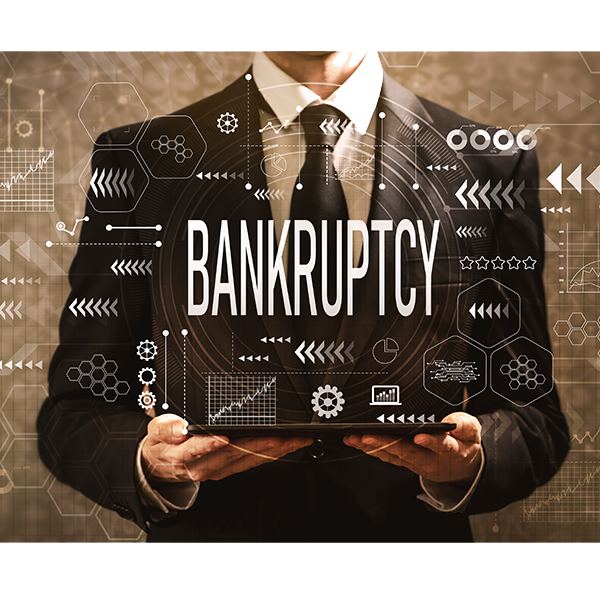Blog
Our vision is to revolutionize and automate the loan servicing workflow of the global financial community.

Bankruptcy Overview for Creditors
 If your company lends, collects debts, or provides goods or services on credit, there’s a good chance you'll need to understand some portion of the intricate world of bankruptcy. This overview will lead you through the purpose of different types of bankruptcy, when and why a debtor might file for one, and how you, as a creditor, can best navigate these situations.
If your company lends, collects debts, or provides goods or services on credit, there’s a good chance you'll need to understand some portion of the intricate world of bankruptcy. This overview will lead you through the purpose of different types of bankruptcy, when and why a debtor might file for one, and how you, as a creditor, can best navigate these situations.What is Bankruptcy?
Bankruptcy helps individuals and organizations to get a “fresh start” when they cannot repay their debts. The United States Court aims to provide this relief and discharge debts while preserving the interests of creditors and other stakeholders. They do this through a complex system of statutes, procedural rules, and judicial precedents that weave together to balance the often competing interests.
The Bankruptcy Code is the primary source for bankruptcy law. The Bankruptcy Code contains a variety of “Chapters” that outline each of the diverse types of bankruptcy. The most commonly filed categories include Chapter 7 and Chapter 13 for individuals and Chapter 11 for businesses.
Chapter 7 Bankruptcy
Chapter 7 bankruptcy, often referred to as liquidation, usually runs its course over 3-4 months. This type of bankruptcy allows the debtor to wipe out unsecured debt completely, choosing which assets to keep in the process. The success rate for Chapter 7 filings sits around 90%, marking it as a commonly sought-after option for those facing significant financial hardship.
One of the top reasons people file a Chapter 7 bankruptcy is medical debt. In 2019, researchers at Harvard Medical School found that 66.5 percent of all personal bankruptcies were tied to medical bills. Medical issues often combine expensive health bills with the inability to work to substantially affect a debtor's situation. Other common reasons people file for Chapter 7 bankruptcy include divorce, business failure, and imminent repo/foreclosure.
The workflows a creditor must complete for a Chapter 7 bankruptcy vary depending on a number of factors, but here are some of the most common workflows we see:
Chapter 13 Bankruptcy
Chapter 13 bankruptcy, also known as personal restructuring, typically spans 3-5 years. This form of bankruptcy consolidates all debts into a single payment, allowing individuals with a regular income to retain valuable assets and maintain a high income during their debt resolution process. Unsecured debt payments under this plan can vary widely.
Similar to Chapter 7 cases, medical debt frequently is a significant motivator in people's decision to file for Chapter 13 bankruptcy. However, unlike Chapter 7, Chapter 13 allows the debtor to halt foreclosure proceedings and make up delinquent mortgage payments over time. This ability to protect their assets from imminent repo/foreclosure is often a driving force for people with a steady income and/or assets they wish to keep. Many choose to file a Chapter 13 bankruptcy to manage their payments while retaining their property. Other reasons individuals file for Chapter 13 bankruptcy include dealing with the financial aftermath of a divorce and handling debts resulting from business failure.
The workflows a creditor must navigate during a Chapter 13 bankruptcy also depend on a number of factors, but here are some of the most common we encounter:
Chapter 11 Bankruptcy
In the business world, Chapter 11 bankruptcy is a pivotal tool for financial restructuring. The timeline for Chapter 11 is not rigid, often spanning several years depending on the business's debt complexity and asset size. Its primary aim is not outright debt elimination but rather allowing businesses to continue operations while reorganizing their financial obligations. This process includes renegotiating contracts, reducing costs, and potentially closing underperforming divisions.
Several workflows associated with Chapter 11 bankruptcy closely mirror those found in Chapter 7 and Chapter 13 procedures. However, the complexity and scale of Chapter 11 cases can be significantly greater, often involving vast and intricate financial landscapes. We’ll reserve our exploration of Chapter 11 workflows for a separate article or book.
Other Chapters
Beyond Chapters 7, 13, and 11, there are additional bankruptcy chapters less frequently utilized. Chapter 12, for example, is specifically designed for family farmers and fishers, providing relief to those struggling in these unique industries. Chapter 9 is reserved for municipalities, including cities and towns, that are unable to meet their financial obligations, and Chapter 15 deals with international bankruptcy situations, providing assistance for cases involving parties in more than one country.
This bankruptcy overview was written in partnership with BankruptcyWatch. If you would like to learn more about how BankruptcyWatch and Shaw Systems have teamed up to provide bankruptcy data for lease servicing, collections, and recovery management users, sign up now for more info.